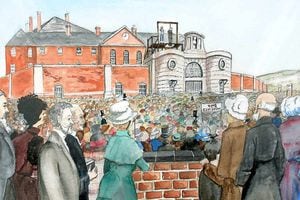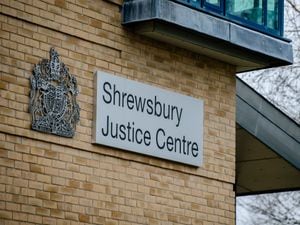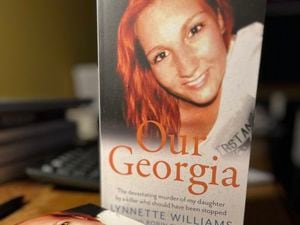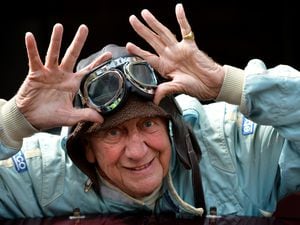Artist questions case of prisoner sent to Shrewsbury gallows
A new painting remembers Shrewsbury Jail's last public hanging, almost 150 years ago. Toby Neal reports.

Outside Shrewsbury Jail the crowds jostle for position to watch the grisly spectacle.
Unlike previous public executions, the festive atmosphere is missing. And at the moment of the drop, there are screams from the women.
The scene of the last public execution at Shrewsbury Jail – which closed forever only a few weeks ago – has been imagined in a painting by an artist with a family connection to the crime which shook the village of Longden, near Shrewsbury, in Victorian times.
But Steve Abbott, who painted the scene, has his doubts that the right man went to the gallows. He has been looking into the crime and is putting together a talk and slide show which he hopes to take around the county. And he has a particularly close connection to the story.
"My wife Liz's maiden name is Lewis, and the murder victim Catherine Lewis was her great-great-grandfather's daughter," says 65-year-old Steve, of Marple, in Cheshire.
Steve got in touch to point out that we were wrong when we said in a feature that the last public hanging at the jail was in 1863.
It was in fact on April 9, 1868, and the Shrewsbury Chronicle, which usually published on a Friday, brought out a special edition on the Thursday of the hanging.
At the scaffold was 36-year-old John Mapp, an obvious suspect for the killing of 10-year-old Catherine as he had previously been convicted and jailed for rape. A man of no great intellect, Mapp made a confession, although Steve has his doubts.
"I have gone into the Mapp family history and the Lewis family history and met up with the Davies family who still live in Longden and visited the grave of Catherine Lewis in the little church at Longden.
"I'm gathering the information at the moment. A lot of it doesn't ring true. There are questions as to whether John Mapp actually did the murder. It's like a whodunnit," said Steve.
The Davieses were, incidentally, neighbours to Catherine in the village.
"It's a long story. I have condensed it to a two-hour slide talk," said Steve.
Another question for which he is seeking answers is what happened to Mapp's body – it is especially pertinent now that the jail has closed.
"He would have been buried in the jail precincts. I know they dug 10 bodies up at the jail and I think they were cremated. I don't know any details about the rest of the people hanged there. These are the sorts of questions I've been asking and trying to get information on," said Steve, whose mother lives in Church Stretton.
Contemporary reports of the hanging acknowledged that it would almost certainly be Shrewsbury's last public execution, and also noted that the crowds seemed smaller than in the past, which was put down to the hanging being at 8am rather than at noon. There was also an absence of the joviality and rowdiness of previous occasions.
Nevertheless the crowd was estimated at around 5,000 to 6,000 men, women, and children, some with opera glasses to get a better view.
The executioner was William Calcraft.
The Shrewsbury Chronicle's 'same day' edition seems to have been caught out by the actual events, as its report betrays potential evidence of a certain amount being written in advance – in particular, it said 'the bolt was drawn, and a few seconds afterwards John Mapp had ceased to exist'.
In fact Mapp seems to have moved his head just as the bolt was being drawn, with the result that, as later reports make clear, he struggled on the scaffold 'for a considerable time'.





